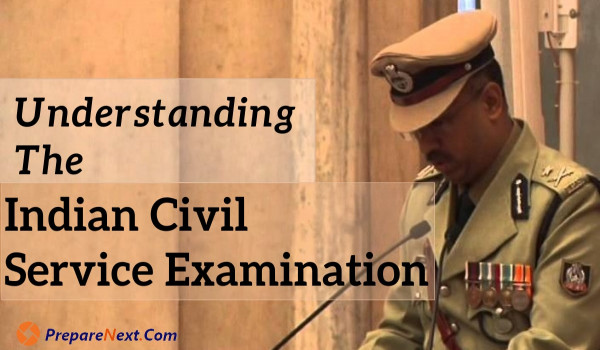Understanding The Indian Civil Service Examination

Understanding The Indian Civil Service Examination
A career in the Indian Civil Services is an aspiration for many in India as it gives them a chance to work in the prestigious public service sector. Overall there are 24 civil services in India which include the IAS, IPS, and IFS. A chance to work in these organizations can be a life-changing opportunity. But what is the requirement to apply for such jobs and how does one go about doing the same. The primary requirement to apply for such jobs is to appear and clear the Civil Services Examination. In the article below we will discuss various aspects of the exam like eligibility, syllabus, exam pattern, and many more.
An Overview
The civil services examination is popularly known as the IAS exam in India but the official terminology for the same is UPSC Civil Services Exam. It is an examination conducted nationwide by the Union Public Service Commission for recruitment into the various civil services. The exam is conducted ian two phases namely the prelims and the mains. It is estimated that over 10 lakh students apply every year but the standards are so high that only a few thousands qualify for the mains. The number of candidates who are shortlisted for the interviews is further reduced. It is said that only about 1000 candidates get selected for the various civil services jobs.
The Exam Pattern
As discussed above the Civil Services exams are conducted in two stages prelims and mains. The objective of the former is to judge the analytical abilities of the candidates and constitutes two general studies papers. The general studies paper 1 constitutes questions pertaining to history, current affairs, economics, general science, biodiversity, politics, art, culture, and more. While the second general studies paper includes questions on subjects like English comprehension, mental ability, and logical reasoning, etc. Both the papers are conducted over 2 hours and carrying a weight of 200 marks each. Candidates are required to score a minimum of 33% to qualify for the mains.
Once the candidate qualifies for the mains he or she is required to appear for a written examination. The pattern for the mains exam constitutes of 9 papers in all out of which marks obtained in 7 are counted for final ranking. While the remaining two are counted as qualifying papers and are conducted in English and regional languages respectively. The details of the 7 ranking papers are as follows.
- The first one is a 250 marks essay paper.
- Next, there are 4 sets of papers on general studies. Topics covered in these papers include Indian Heritage, Culture, Governance, Politics, Technology, Bio-Diversity, Ecology, and Ethics, etc. Each of these papers carries a weight of 250 marks.
- The last two papers are based on optional subjects which can be selected by the candidates. Again these papers also carry a weight of 250 marks each.
The combined mark for the written examination is 1750. Candidates qualifying for the written exam are required to take up the one-on-one interview. The total marks allocated for the interview are 275. The final marks list is calculated from the marks obtained by the candidates from 2025.

A Guide To Preparing For Placement Aptitude Test
The purpose of an aptitude test is to assess your problem-solving abilities. Make sure you are solving problems faster than your competitors.

Career Opportunities In Physical Education
A physical education program involves teaching students physical competence and knowledge about movement and safety, as well as their ability to apply these skills to a wide range of activities associated with a healthy, active lifestyle.

NEET vs NEXT Examination | NEET | NEXT
There is a difference between the two exams due to their different exam patterns. In this video we are gonna see about "How does the National Exit Exam (NEXT) differ from NEET PG

Careers In Library and Information Science
For students interested in sharing information, a library sciences career is a good choice. Library professionals enjoy collecting, organizing, and managing books, magazines, electronic data, and similar materials

Tell Me About Yourself | How To Answer For Tell Me About Yourself
Tell Me Something About Yourself may be a common interview question and it's vital that one should answer these questions impressively

How to Write a Resume | Tips And Tricks To Write Resume
Your resume is usually the primary step to getting an interview with an employer. confirm you include the foremost relevant information on your resume, organize it to spotlight the foremost important information, and punctiliously review for errors. Once your resume is polished and finalized, it should assist you get more callbacks, interviews, and job offers.

Top 10 Careers In India
Here we are going to give career advice and guidance for the students who wish to pursue their careers after completing higher studies.

Top 10 Study Abroad Scholarships You Need to Know About
INLAKS Scholarships allow meritorious students to pursue courses in various disciplines at top universities in the UK, Europe, & the U.S. The foundation offers scholarship programs in collaboration with Imperial College London, Royal College of Art (London), School of Oriental and African Studies (London), University of Cambridge, and Sciences Po (Paris).

Career Option In Animation
In order to become an animator, one needs both a large portfolio and an advanced degree. Students who wish to prepare for four-year university animation programs can take individual courses in colleges that don't offer associate degrees

A Guide To The Indian Civil Service Exam
In India, the Civil Services Examination is a national competitive examination administered by the Union Public Service Commission for recruitment to the higher Civil Services of the government.